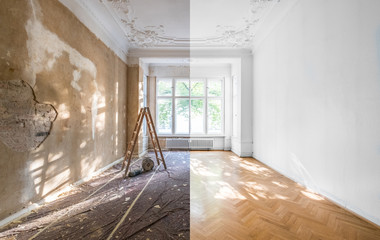Infidelity is an emotionally devastating issue that can affect people in a variety of ways. Many of these cases require PIs to gather evidence and verify suspicions while exercising a high degree of discretion.
The investigative process for infidelity can include a range of methods, including surveillance, digital forensics, and witness statements. Infidelity Private Investigator will help you understand how investigators gather proof in these sensitive matters.

Surveillance
A central part of a private investigator’s work in infidelity cases involves surveillance. This involves closely observing a subject’s daily activities and interactions, looking for clues that suggest cheating. For example, a PI might examine financial records for unexplained expenses or interview witnesses who have observed suspicious behavior. These observations can then be used as evidence in legal proceedings. PIs must be extremely careful to follow all legal and ethical guidelines for surveillance, so that the proof they gather is valid in court.
Observing a suspected cheater can be emotionally draining, but a private investigator is trained to remain objective. They are able to separate feelings and emotions from facts, so they can focus on gathering hard evidence that supports their client’s claims. This objectivity is vital to the success of an investigation, especially if it leads to legal proceedings such as divorce or child custody.
A PI’s skill set also includes access to advanced technology, an understanding of digital footprints, and experience collecting physical evidence. They can also help their clients determine the best way to present their evidence in a court of law, whether it’s through photographs or video recordings. Using these tools helps their clients make informed decisions about the next steps in their relationships or legal proceedings.
Finding out a partner is cheating can be devastating, but knowing the truth can also lead to healing and closure. A professional investigator’s ability to collect solid evidence of infidelity can provide peace of mind and clarity in these stressful times.
During an infidelity investigation, you want to hire a trusted and experienced detective who will treat your case with discretion. Ask your potential PI for references from previous clients and find out how they handled confidential information. You should also ask about their licenses, insurance, and privacy policies. The right PI will be happy to discuss this with you in detail, so that you can feel confident in hiring them.
Digital Footprints
Like physical footprints left in the sand, your digital footprint is your data trail online. Almost every action you take on the Internet leaves behind a digital footprint, including visiting websites, subscribing to newsletters, and searching for products. This trail can be followed to discover your identity, behavior, opinions, and more. It’s a complex and invasive way for others to keep tabs on you without your knowledge, and a private investigator is trained to track these digital footprints as part of an infidelity investigation.
Digital forensics is the process of analyzing computer files and electronic devices to uncover evidence of infidelity. A private investigator is trained in digital forensics and can use tools such as text message analysis and social media monitoring to discover suspicious activity. Private investigators can also access a subject’s phone records and call logs (with consent or through legal means) to identify patterns of contact with suspected lovers. They may also review a subject’s financial transactions to identify unexplained expenses, large cash withdrawals, or suspicious purchases.
Finding out your spouse or partner is cheating on you can be a heartbreaking and stressful experience. A private investigator can help you obtain hard evidence of the truth, allowing you to move forward with your life and resolve any issues that arise. PIs can also provide evidence to support legal proceedings, such as divorce or custody cases.
When you hire a PI, choose one who is licensed and insured in your state and follows ethical standards. Ask for references and check reviews online to find out what their clients have said about them. Ask about their policies on confidentiality and communication, and how they will handle your case with care and discretion.
A reputable and experienced PI will be able to discuss their services in detail with you before beginning your investigation. They should be able to explain the methods they will use to collect evidence and answer any questions you might have. They should also be willing to work with your lawyer if you intend to use the evidence in court proceedings.
Interviewing
When suspicions of infidelity arise, couples may seek out professional help. Private investigators have a variety of tools at their disposal, including surveillance, digital tracking, and interviewing techniques, to provide solid proof that will either confirm or refute infidelity claims. In this blog post, we explore how private investigators can uncover the truth while maintaining confidentiality and discretion.
The backbone of any private investigation is surveillance. An infidelity private investigator will carefully monitor their subject’s movements and interactions, documenting where they go and who they spend time with. This is more than simply tailing a subject; it’s about blending in, understanding routines, and identifying inconsistencies. It’s also about analyzing the subject’s digital footprints, such as text messages and online dating profiles. And it’s about examining the subject’s financial behavior, such as unexplained expenses that could be linked to an affair.
In addition to surveillance, private investigators will conduct interviews and analyze physical evidence to support their findings. For example, they may speak with friends or coworkers who can shed light on changes in the subject’s behavior. They may also review the subject’s home or office to look for hidden camera footage and other physical evidence that supports their case. Lastly, they will document and present their findings to their clients in the form of photos, videos, and written documentation that is court-admissible.
When hiring a private investigator, be sure to select someone with the right experience and credentials. Check their licensing and qualifications, as well as their specialization in infidelity investigations. You should also look for a PI who is willing to work with you and listen to your concerns. Finally, be aware that a professional PI will adhere to all legal and ethical guidelines, never engaging in illegal wiretapping, spying, or other violations. This ensures that all evidence is legally and confidentially obtained and can be used in court if needed.
Legal Preparation
A private investigator is often hired when suspicions of cheating arise in a relationship. A private investigator can quickly gather evidence to confirm or deny those suspicions by using surveillance, digital tools, and other investigative techniques. This blog explores the key methods private investigators use to catch cheating spouses while keeping their investigations discreet and confidential.
A PI’s expertise allows them to quickly and accurately gather evidence that is legally and ethically admissible in court. This is important because evidence of infidelity can significantly influence legal proceedings such as divorce settlements and child custody determinations. PIs must be familiar with privacy laws, recording guidelines, and permissible surveillance techniques in order to ensure that the evidence they gather is valid and reliable.
An ICS Investigator can collect photographic and video proof of a cheating spouse, document financial evidence such as suspicious expenses, or analyze digital communication that may point to infidelity. They can also interview witnesses to establish factual circumstances. Unlike an upset spouse, a professional private investigator remains emotionally detached from the situation and can acquire more information in less time. This makes their documentation more trustworthy and carries more weight in a court of law.
While many people might be tempted to conduct their own investigation of a cheating spouse, this can be extremely stressful and risky for the entire family. A professional private investigator is highly trained to remain objective and can provide the hard, real evidence needed to prove infidelity. Additionally, a PI is able to access and record data that is not available to the average person, such as phone records or text message histories.
When hiring a private investigator for an infidelity case, make sure they are licensed, insured, and have experience working with clients like you. Ask for references and review online reviews to find a reputable and honest PI. Ensure they have a process in place to quickly and accurately prepare documents for filing, and that they have the technology to capture the necessary information. Finally, choose a private investigator who offers a free consultation to discuss the scope of work and the cost associated with your specific needs.
